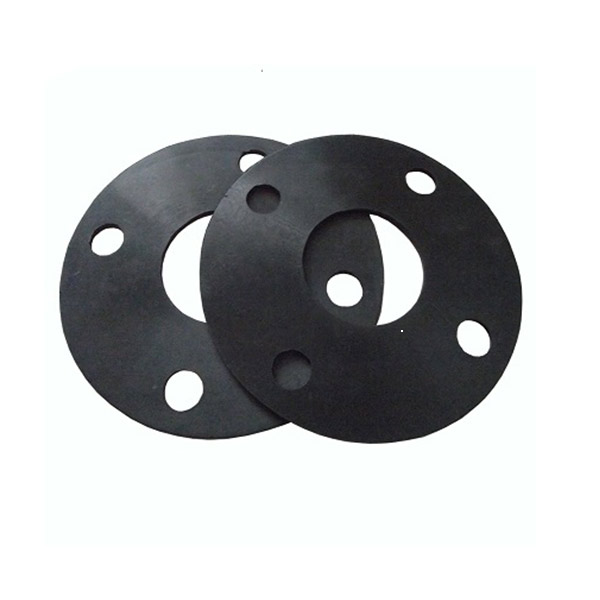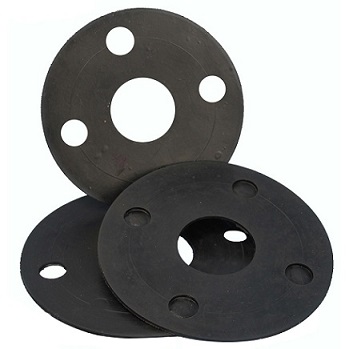
EPDM Flange Rubber Gaskets


EPDM has excellent weather resistant characteristics. Used as higher end applications on gasketing and seals for pumps. EPDM rubber,
commercial grade, is similar to the EPDM rubber roofing, however the commercial grade is less rigid and formable than the roofing rubber.
EPDM rubber material gasket is very resilient to alkaloids and detergents, it does have some mild resistant to petroleum. High pressure
lines and pipe gaskets use EPDM rubber because of its resistance to ultraviolet light and temperature cycling. UV and temperature
extremes cause most rubber material to become cracked brittle.
EPDM rubber gasket sheet is a great weather resistant material.
Advantages
• Completely UV stabilised making it highly resistant to ozone effects
and extreme weather conditions
• Will not deteriorate when submerged in fresh or seawater
• Good mechanical, and wear resistance properties
• Excellent chemical resistance to acids and alkalis
• Good high and low temperature resistance
• Ideal for long term outdoor applications
• Very durable and long time usage
• Good low electrical conductivity
• Good Tensile Strength
• Excellent color stability
Application
• Harsh extremes as marine and underwater applications
• UV, ozone and general weathering applications
• High temperature water environments
• Pipe gasket seals and weather strips
• Outdoor and automotive applications
• Good for use with drinking water
• High pressure lines
• Food industries
• Petrochemicals., etc
EPDM rubber Properties
|
Item |
EPDM |
Test Method |
|
Color |
black., etc |
- |
|
Specific gravity |
1.1-1.4g/cm3 |
ASTM D297 |
|
Hardness |
40-80 Shore A |
ASTM D2240 |
|
Tensile strength |
8 MPa (min) |
ASTM D412 |
|
Elongation at break |
250% (min) |
ASTM D412 |
|
Size |
Normal or custom |
- |
|
Tear strength |
26N/mm |
ASTM D 624 |
|
Low temperature resistance |
-50°C |
ASTM D1329 |
|
Temperature range |
-50°C to +140°C |
ASTM D2000 |
Kinds of Rubber Properties
|
Common name |
Neoprene |
EPDM |
Nitrile |
Silicone |
Viton |
Kalrez |
|
Chemical Compatibility |
||||||
| Lubricating and Fuel Oils |
|
X |
|
X |
|
|
| Hydraulic Oils |
|
X |
|
|
|
|
| Fireproof Hydraulic Fluids |
|
|
|
|
X |
|
| Vegetable Oils, Animal Fats |
|
|
|
|
|
|
| Gasoline (high octane) |
 X X
|
X |
 
|
X |
|

|
| Kerosene |

|
X |

|
X |
|

|
| Aromatic Hydrocarbons | X | X |
 X X
|
X |
|

|
| Aliphatic Hydrocarbons |

|
X |

|
X |
|

|
| Alcohols |

|
|

|
|
|

|
| Ketones |
 X X
|

|
X | X | X |

|
| Halogenated Solvents | X | X | X | X |

|

|
| Water (>80°C) |

|

|

|

|
|

|
| Concentrated Acids | X | X | X | X |
|

|
| Diluted Acids |
|
|
 X X
|
X |
|

|
| Alkalis |
 
|

|
|
|
X |

|
|
Properties |
||||||
| Max. Continuous temp °C | 105 | 130 | 121 | 204 | 250 | 316 |
| Low Temperature °C | –50 | –54 | –25 | –85 to –125 | –8 to -30 | –8 |
| Tensile Strength, MPa | 25 | 17 | 27 | 10 | 20 | 15 |
| Hardness Shore A | 30–95 | 40–90 | 40–95 | 30–90 | 70–90 | 65-95 |
Key:  = Excellent ,
= Excellent ,  = Good,
= Good,  = Fair, X = Not Recommended
= Fair, X = Not Recommended